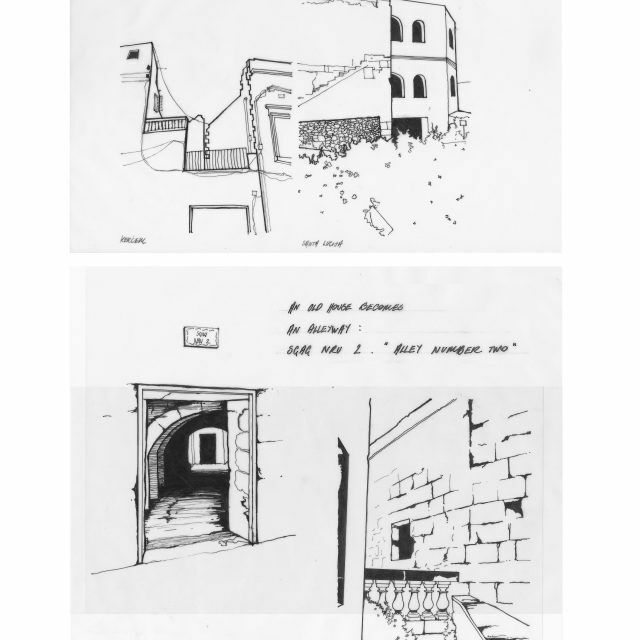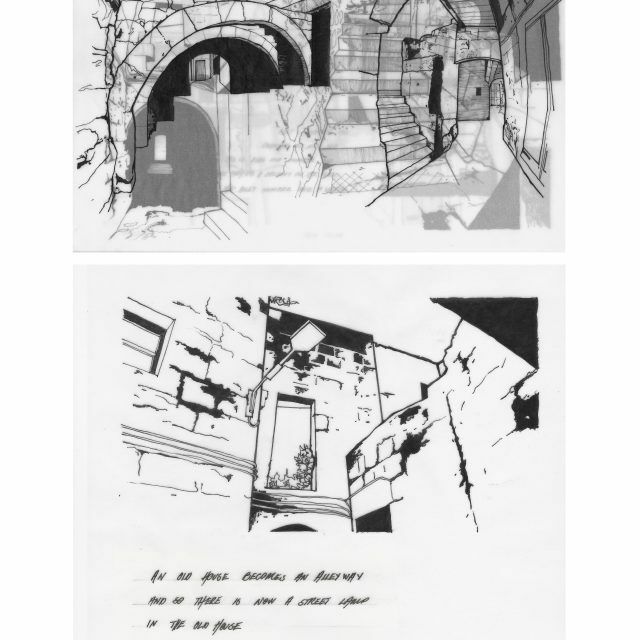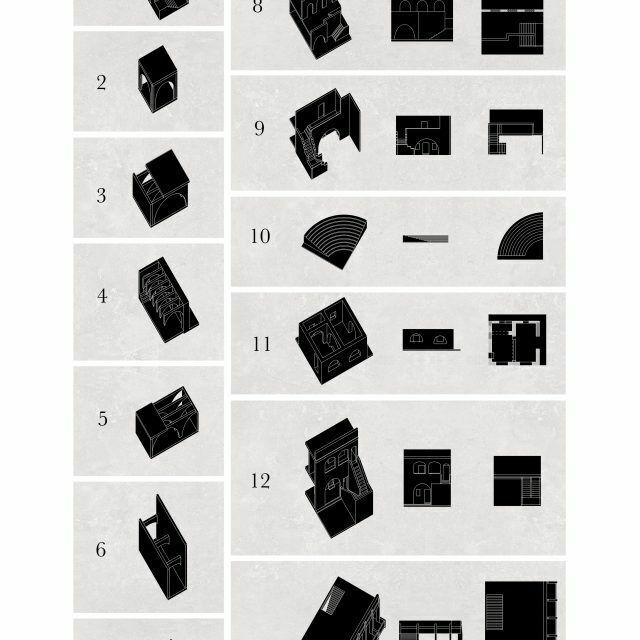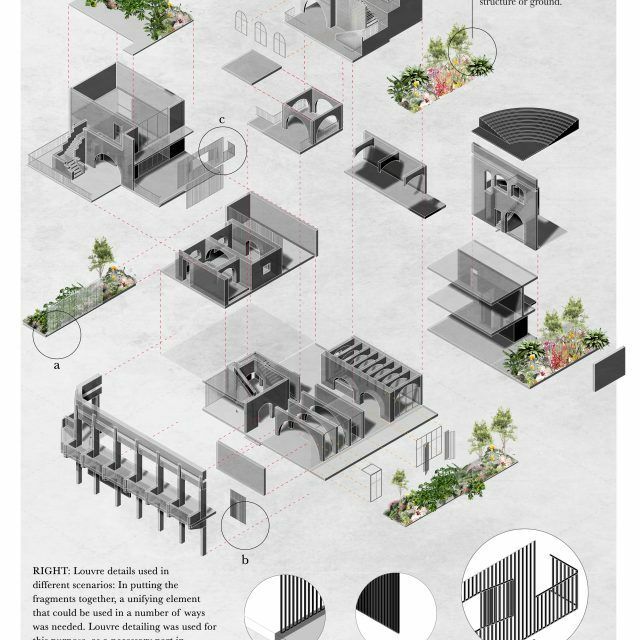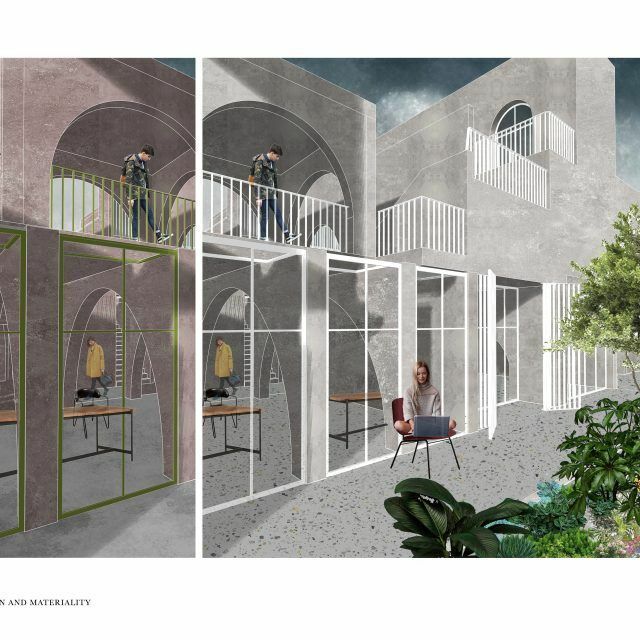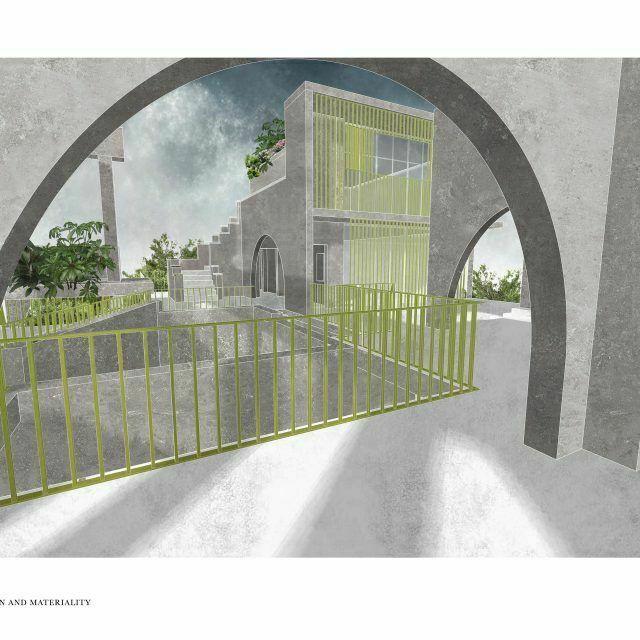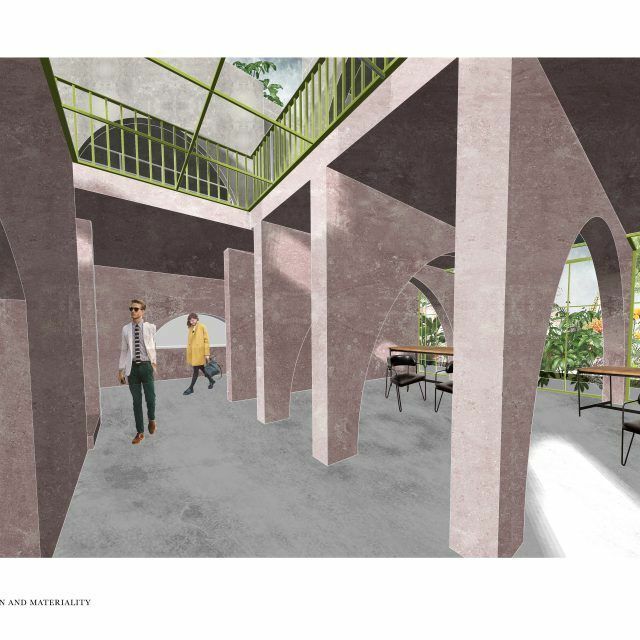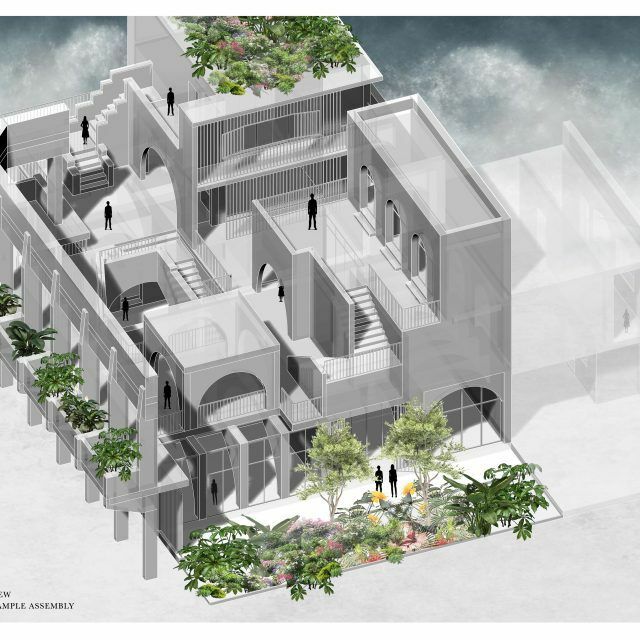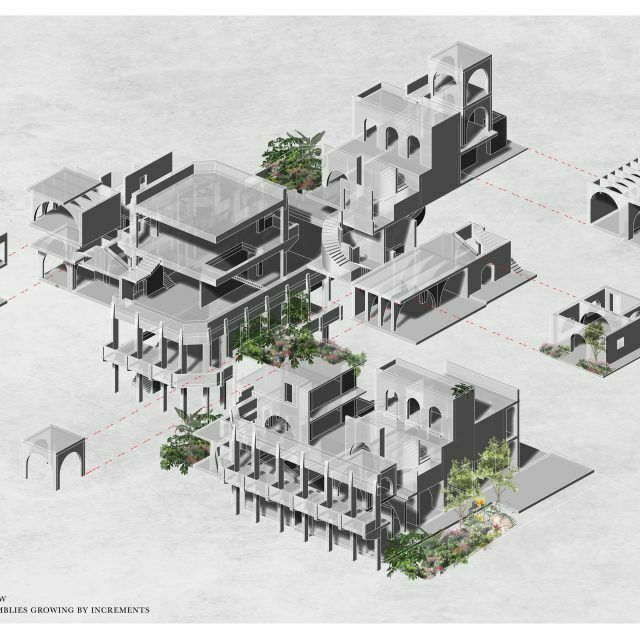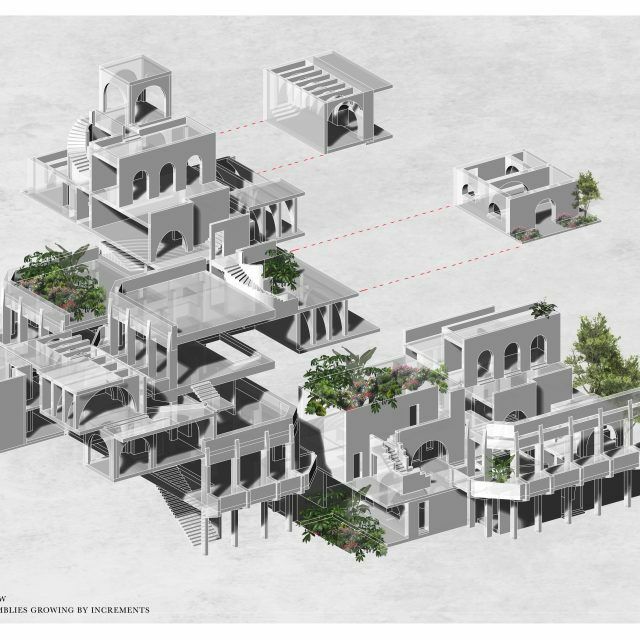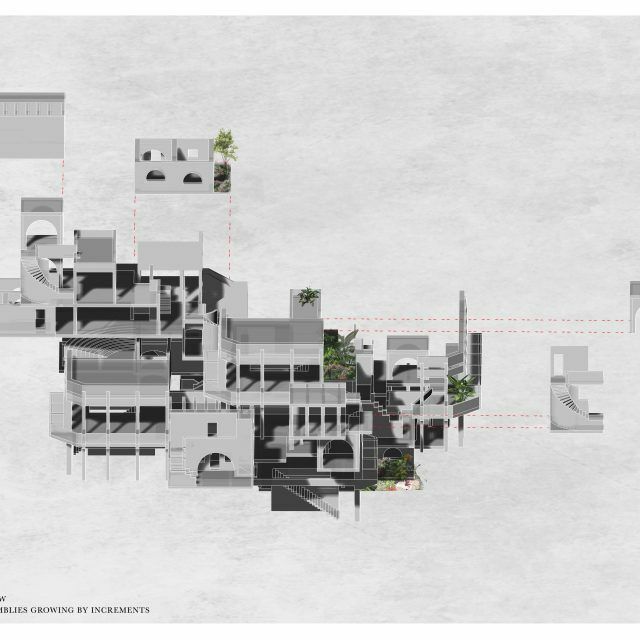M. Arch. Thesis Project Award
Chance and Order in Architectural Production
This Thesis project investigates chance and order in architectural production by focusing on chance as a method for design. In investigating the question ‘what is chance?’ a particular definition stood out. Bergson defines chance as the interaction between intended order – how we organise or give structure – and an automatic order – what results naturally. In relation to this, often in Architecture, as Julienne Hanson puts it, intended order is the mechanism by which we recognise the Architectural mind at work.
Two main questions are therefore posed: Are there other ways the Architectural mind can be seen at work? Can chance be used as an active tool in architectural design and production? The aim was to engage in an exercise of chance by formulating a design method that is guided by it.
First off, the design method focused on devising a system that allows for incremental design, allowing for chance in its development. By designing fragments that could be used for incrementally developing the built fabric, this could be a possibility. Then a thought arose. What if the fragments themselves were a result of chance, and to devise them I used an exercise than embodied this? For this reason, the design method was developed to incorporate fragments from around the island of Gozo. Gozo was used as the data minefield for the fragments themselves, sourcing pieces as an exercise of chance. In putting them together, it was another exercise of chance, but also a structuring order that was needed to create building assemblies into habitable spaces.
In the end, chance gave rise to the tools to create this design method that allows for chance growth, but it could only exist in conjunction to what Bergson defines as intended order. It’s perhaps not about distinguishing between one and the other, but appreciating a strong interaction of both.
Date:
July 19, 2024


